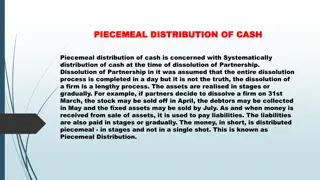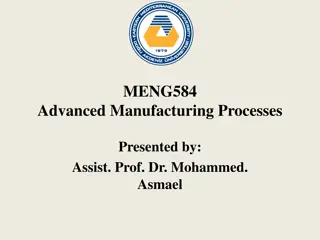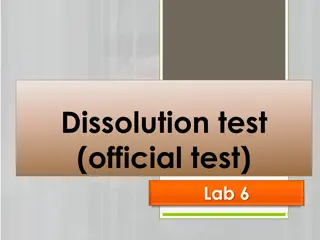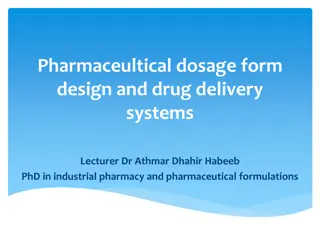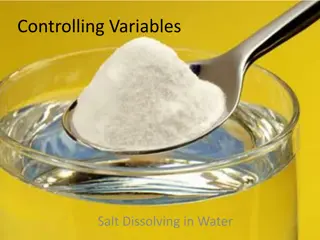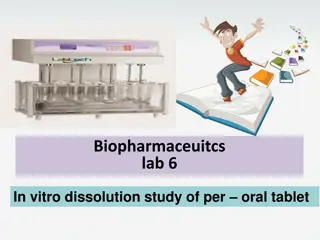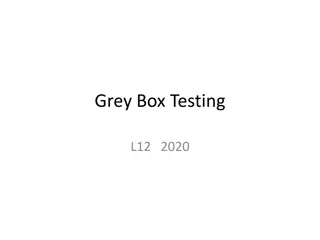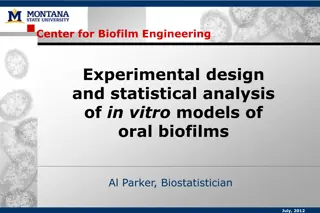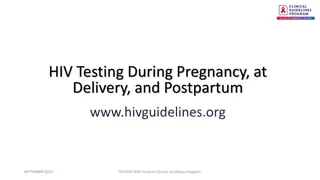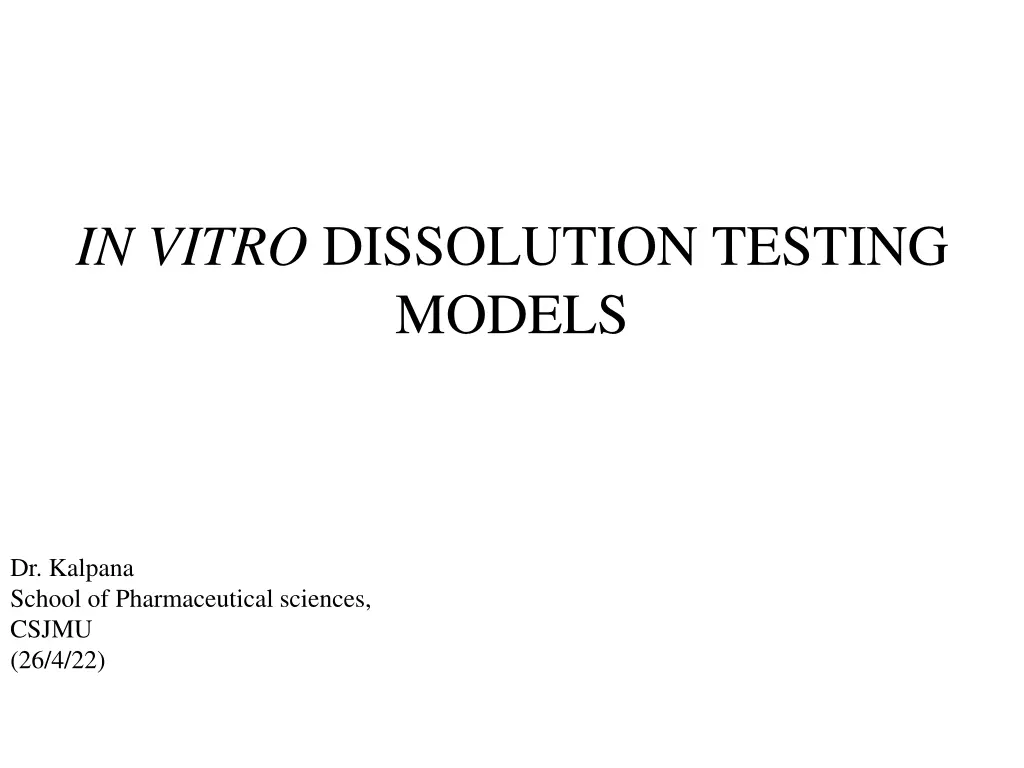
Advanced In Vitro Dissolution Testing Models
Explore the significance and application of in vitro dissolution testing models in pharmaceutical sciences. Understand the need for dissolution studies, evaluation of bioavailability, and quality control. Discover official dissolution rate test apparatus and various methods like rotating basket and paddle apparatus, and the reciprocating cylinder method for precise dissolution testing of formulations.
Download Presentation

Please find below an Image/Link to download the presentation.
The content on the website is provided AS IS for your information and personal use only. It may not be sold, licensed, or shared on other websites without obtaining consent from the author. If you encounter any issues during the download, it is possible that the publisher has removed the file from their server.
You are allowed to download the files provided on this website for personal or commercial use, subject to the condition that they are used lawfully. All files are the property of their respective owners.
The content on the website is provided AS IS for your information and personal use only. It may not be sold, licensed, or shared on other websites without obtaining consent from the author.
E N D
Presentation Transcript
IN VITRO DISSOLUTION TESTING MODELS Dr. Kalpana School of Pharmaceutical sciences, CSJMU (26/4/22)
Need for Dissolution study Evaluation of bioavailability Development of therapeutically optimal dosage forms Minimizes uses of humans as test subjects Ensures quality of product Correlation between dissolution results and bioavailability of product between batches Product development , quality control and research and application Screening of formulations development more efficacious and during product
Official dissolution rate test apparatus App no I.P B.P U.S.P Drug Product 1 Paddle Basket Rotating basket Tablets 2 Basket Paddle Paddle Tablets , capsules 3 Flow through cell Reciprocating cylinder Extended release formulation 4 Flow through cell Low water soluble drug 5 Paddle over disk Transdermal formulation 6 Rotating cylinder Transdermal formulation 7 Reciprocating disk Extended release formulation
ROTATING BASKET APPARATUS (APPARATUS 1) First described by Pernarowski It is basically a closed-compartment, beaker type apparatus. It comprising of a cylindrical glass vessel with hemispherical bottom of one litre capacity partially immersed in a water bath. A cylindrical basket made of #22 mesh is located centrally in the vessel at a distance of 2 cm from the bottom and rotated by a variable speed motor through a shaft. All metal parts like basket and shaft are made of stainless steel.
ROTATING PADDLE APPARATUS(APPARATUS 2) First described by Levy and Hayes. Here, basket is replaced with a paddle which acts as a stirrer. A small, loose, wire helix may be attached to the dosage form that would otherwise float. The position and alignment of the paddle are specified in the official books.
THE RECIPROCATING CYLINDER METHOD (APPARATUS 3) This method adopts the USP disintegration basket and rack assembly for the dissolution test. The disks are not used. This method is less suitable for precise dissolution testing due to the amount of agitation and vibration involved. Used for dissolution testing of controlled-release bead-type (pellet) formulation. Set of cylindrical , flat bottomed glass vessels equipped with reciprocating cylinders For testing extended release products and beads Temp 37oC
Flow through cell method (apparatus-4) Reservoir of medium Pump that forcing medium throgh the cell holding test sample Flow rate from 4-16 ml /min For modified release dosage forms, containing active ingredients with limited solubility Laminar flow by pulse less pump Dissolution media may be fresh or recirculated
PADDLE OVER DISK METHOD (APPARATUS 5) Modification of Apparatus 2. Here, stainless steel disk designed for holding transdermal system at the bottom of the vessel. The disk/device should not , react with, or interfere with the specimen being tested. The disk holds the system flat and is positioned such that the release surface is parallel with the bottom of the paddle blade.
CYLINDER METHOD (APPARATUS 6) Same as apparatus 1,except to replace the basket and shaft with a S.S. cylinder stirring element. Temperature - 32 0.5 The dosage unit is placed on the cylinder. Distance between the inside bottom of the vessel and cylinder is maintained at 25 2 mm. Used for transdermal formulation
RECIPROCATING HOLDER METHOD (APPARATUS 7) The assembly consists of a set of calibrated solution containers, a motor and drive assembly to reciprocate the system vertically. Various type of sample holder are used. Used for controlled-release formulation

